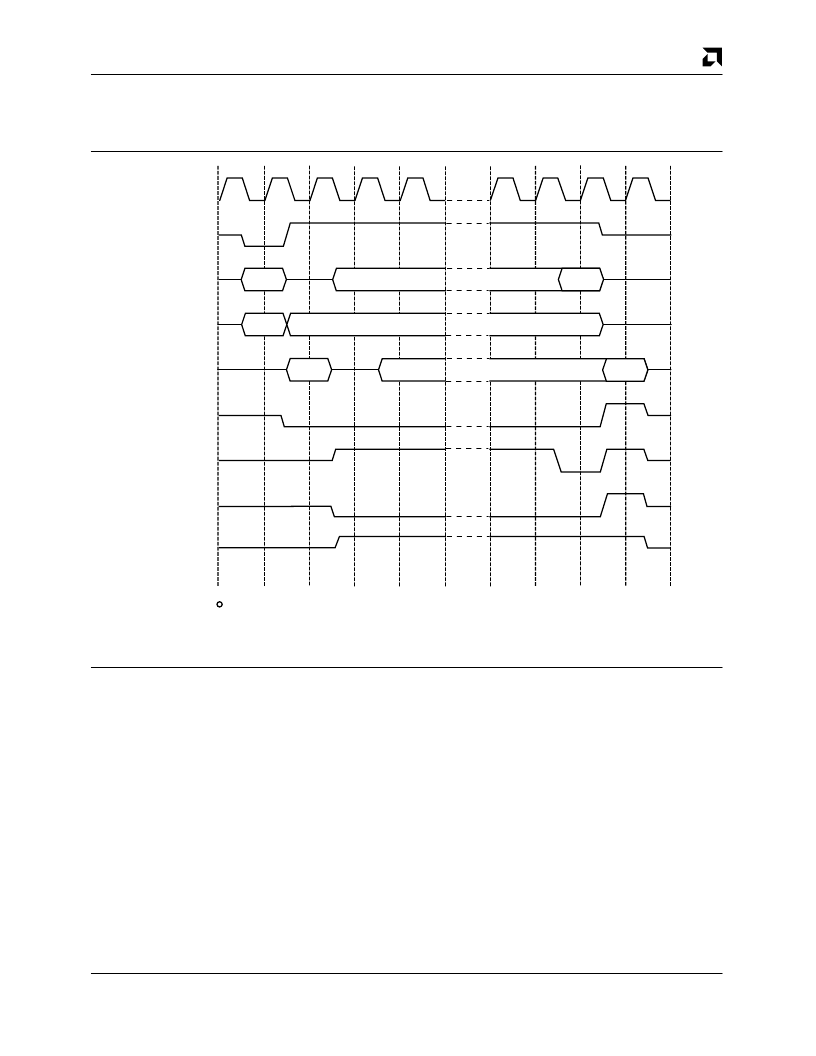- 您現(xiàn)在的位置:買賣IC網(wǎng) > PDF目錄366550 > AM79C970AVCW (ADVANCED MICRO DEVICES INC) PCnet-PCI II Single-Chip Full-Duplex Ethernet Controller for PCI Local Bus Product PDF資料下載
參數(shù)資料
| 型號(hào): | AM79C970AVCW |
| 廠商: | ADVANCED MICRO DEVICES INC |
| 元件分類: | 微控制器/微處理器 |
| 英文描述: | PCnet-PCI II Single-Chip Full-Duplex Ethernet Controller for PCI Local Bus Product |
| 中文描述: | 2 CHANNEL(S), 10M bps, LOCAL AREA NETWORK CONTROLLER, PQFP144 |
| 封裝: | TQFP-144 |
| 文件頁數(shù): | 35/219頁 |
| 文件大小: | 1065K |
| 代理商: | AM79C970AVCW |
第1頁第2頁第3頁第4頁第5頁第6頁第7頁第8頁第9頁第10頁第11頁第12頁第13頁第14頁第15頁第16頁第17頁第18頁第19頁第20頁第21頁第22頁第23頁第24頁第25頁第26頁第27頁第28頁第29頁第30頁第31頁第32頁第33頁第34頁當(dāng)前第35頁第36頁第37頁第38頁第39頁第40頁第41頁第42頁第43頁第44頁第45頁第46頁第47頁第48頁第49頁第50頁第51頁第52頁第53頁第54頁第55頁第56頁第57頁第58頁第59頁第60頁第61頁第62頁第63頁第64頁第65頁第66頁第67頁第68頁第69頁第70頁第71頁第72頁第73頁第74頁第75頁第76頁第77頁第78頁第79頁第80頁第81頁第82頁第83頁第84頁第85頁第86頁第87頁第88頁第89頁第90頁第91頁第92頁第93頁第94頁第95頁第96頁第97頁第98頁第99頁第100頁第101頁第102頁第103頁第104頁第105頁第106頁第107頁第108頁第109頁第110頁第111頁第112頁第113頁第114頁第115頁第116頁第117頁第118頁第119頁第120頁第121頁第122頁第123頁第124頁第125頁第126頁第127頁第128頁第129頁第130頁第131頁第132頁第133頁第134頁第135頁第136頁第137頁第138頁第139頁第140頁第141頁第142頁第143頁第144頁第145頁第146頁第147頁第148頁第149頁第150頁第151頁第152頁第153頁第154頁第155頁第156頁第157頁第158頁第159頁第160頁第161頁第162頁第163頁第164頁第165頁第166頁第167頁第168頁第169頁第170頁第171頁第172頁第173頁第174頁第175頁第176頁第177頁第178頁第179頁第180頁第181頁第182頁第183頁第184頁第185頁第186頁第187頁第188頁第189頁第190頁第191頁第192頁第193頁第194頁第195頁第196頁第197頁第198頁第199頁第200頁第201頁第202頁第203頁第204頁第205頁第206頁第207頁第208頁第209頁第210頁第211頁第212頁第213頁第214頁第215頁第216頁第217頁第218頁第219頁

P R E L I M I N A R Y
AMD
35
Am79C970A
bit 7), which is hardwired to ONE. The PCnet-PCI II con-
troller is capable of detecting a memory cycle even
when its address phase immediately follows the data
phase of a transaction to a different target without any
idle state in-between. There will be no contention on
the
DEVSEL
,
TRDY
and
STOP
signals, since the
PCnet-PCI II controller asserts
DEVSEL
on the second
clock after
FRAME
is asserted (medium timing).
19436A-8
FRAME
CLK
AD
IRDY
TRDY
C/
BE
DEVSEL
STOP
PAR
DEVSEL
is sampled
ADDR
CMD
PAR
1
2
3
4
5
42
43
44
45
DATA
PAR
BE
Figure 5. Expansion ROM Read
Exclusive Access
The host can lock a set of transactions to the
PCnet-PCI II controller. The lock allows exclusive ac-
cess to the device and can be used to guarantee atomic
operations. The PCnet-PCI II controller transitions from
the unlocked to the locked state when
LOCK
is deas-
serted during the address phase of a transaction that se-
lects the device as the target. The controller stays in the
locked state until both
FRAME
and
LOCK
are
deasserted, or until the device signals a target abort.
Note that this protocol means the device locks itself on
any normal transaction. The controller will unlock
automatically at the end of a normal transaction, be-
cause
FRAME
and
LOCK
will be deasserted. The lock
spans over the whole slave address space. The lock
only applies to slave accesses. The PCnet-PCI II
controller might perform bus master cycles while being
locked in slave mode. When another master tries to
access the PCnet-PCI II controller while it is in the
locked state, the device terminates the access with a
disconnect/retry sequence.
Slave Cycle Termination
There are three scenarios besides normal completion of
a transaction where the PCnet-PCI II controller is the
target of a slave cycle and it will terminate the access.
Disconnect When Busy
The PCnet-PCI II controller cannot service any slave ac-
cess while it is reading the contents of the Microwire
EEPROM. Simultaneous access is not possible to avoid
conflicts, since the Microwire EEPROM is used to initial-
ize some of the PCI configuration space locations and
most of the BCRs. The Microwire EEPROM read opera-
tion will always happen automatically after the deasser-
tion of the
RST
pin. In addition, the host can start the
相關(guān)PDF資料 |
PDF描述 |
|---|---|
| AM79C970 | PCnetTM-PCI Single-Chip Ethernet Controller for PCI Local Bus |
| AM79C971VCW | PCnet⑩-FAST Single-Chip Full-Duplex 10/100 Mbps Ethernet Controller for PCI Local Bus |
| AM79C971 | PCnet⑩-FAST Single-Chip Full-Duplex 10/100 Mbps Ethernet Controller for PCI Local Bus |
| AM79C971KCW | IC LOGIC 16211 24-BIT FET BUS SWITCH -40+85C TSSOP-56 35/TUBE |
| AM79C972BKCW | PCnet⑩-FAST+ Enhanced 10/100 Mbps PCI Ethernet Controller with OnNow Support |
相關(guān)代理商/技術(shù)參數(shù) |
參數(shù)描述 |
|---|---|
| AM79C970AVI\\W | 制造商:Rochester Electronics LLC 功能描述:- Bulk |
| AM79C970AVI\W | 制造商:Rochester Electronics LLC 功能描述:- Bulk |
| AM79C970AVIW | 制造商:Rochester Electronics LLC 功能描述: |
| AM79C970AVW | 制造商:Rochester Electronics LLC 功能描述:- Bulk |
| AM79C970AWW WAF | 制造商:Advanced Micro Devices 功能描述: |
發(fā)布緊急采購,3分鐘左右您將得到回復(fù)。